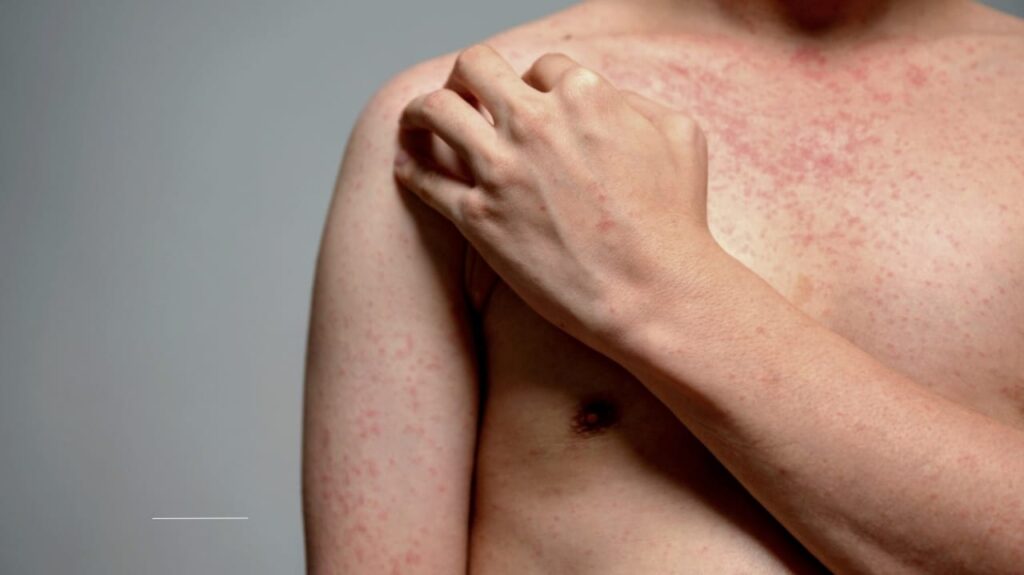
Measles, a disease once declared eliminated in many parts of the world, is making a dangerous comeback. Recent reports from the World Health Organization (WHO) highlight a sharp rise in measles cases globally, with outbreaks erupting in regions like Europe, the Middle East, and the United States. This resurgence has reignited urgent conversations about measles vaccines—and specifically, the role of boosters in closing immunity gaps and protecting public health.
Why Measles Is a Threat We Can’t Ignore
Measles isn’t just a childhood rash. It’s one of the most contagious viruses known to science. Spread through coughing, sneezing, or even lingering in the air for hours, measles infects nine out of ten unvaccinated people exposed to it. Early symptoms mimic a common cold—fever, cough, runny nose—but escalate rapidly. A distinctive red rash appears, followed by severe complications like pneumonia, brain swelling (encephalitis), and death. Before the measles vaccine became widely available, the virus claimed millions of lives annually.
While vaccines have dramatically reduced measles deaths, immunity gaps persist. Dr. Walter Orenstein, an infectious disease specialist at Emory University, explains: “Measles outbreaks act like a spotlight. They reveal weaknesses in our defenses—communities where vaccination rates are lower than they should be.”
How the Measles Vaccine Works: A Two-Dose Shield
The measles-mumps-rubella (MMR) vaccine is a cornerstone of modern medicine. Two doses are approximately 97% effective at preventing measles, often for life. The first dose, typically given between 12 and 15 months of age, primes the immune system to recognize and fight the virus. The second dose, administered between ages 4 and 6, serves as a critical backup. It protects the small percentage of children who didn’t fully respond to the first dose.
However, immunity can weaken over time in some individuals. Studies suggest that people vaccinated decades ago may have lower antibody levels compared to those vaccinated more recently. This doesn’t mean they’re unprotected, but it raises important questions: Could a booster dose enhance immunity during outbreaks? And who might need one?
When Boosters Become Essential
Measles vaccine boosters aren’t routinely recommended for everyone. But in specific scenarios, they play a vital role:
- Travelers to regions with active outbreaks (e.g., parts of Europe, Asia, or Africa).
- Healthcare workers, who face higher exposure risks.
- Communities experiencing outbreaks, where even vaccinated individuals may benefit from an extra layer of protection.
For example, during a recent measles outbreak in Florida, health officials advised unvaccinated adults and those with uncertain vaccination histories to receive an MMR dose immediately. “Boosters act as an insurance policy in high-risk situations,” explains Dr. Amesh Adalja, a senior scholar at Johns Hopkins University.
The Fragility of Herd Immunity
Herd immunity occurs when enough people in a population are immune to a disease, making its spread unlikely. For measles, this threshold is 95% vaccination coverage. Drop below that number, and outbreaks become inevitable. Alarmingly, vaccination rates in some U.S. communities have fallen below this critical mark. Kindergarten vaccination rates, for instance, have dipped to concerning levels in recent years, driven by vaccine hesitancy and disruptions in healthcare access.
A case in point: When an unvaccinated traveler with measles visited a pediatric clinic in New York, the virus spread rapidly. Dozens of cases emerged within weeks—mostly among unvaccinated children, but a handful had received one dose. “This shows how measles exploits even minor gaps in immunity,” says Dr. Paul Offit, director of the Vaccine Education Center at Children’s Hospital of Philadelphia.
Global Factors Driving Measles’ Resurgence
The problem isn’t confined to any single country. Globally, millions of children miss their first measles vaccine dose each year, according to the WHO. Conflict, poverty, and strained healthcare systems—exacerbated by events like the COVID-19 pandemic—are key contributors. In countries like Yemen, measles has surged amid humanitarian crises, overwhelming hospitals and claiming young lives.
Even nations with strong healthcare infrastructure aren’t immune. Countries like the U.K., which had previously eliminated measles, have seen resurgences due to lagging MMR uptake. “Complacency is our enemy,” says Dr. Natasha Crowcroft, a senior WHO advisor on measles. “When vaccination rates slip, the virus returns.”
Debunking Myths About the MMR Vaccine
Misinformation remains a stubborn barrier to vaccination. The long-debunked myth linking the MMR vaccine to autism continues to circulate, despite decades of research confirming the vaccine’s safety. Surveys reveal that a concerning number of parents still question vaccine safety, often due to misleading online content.
Here’s what the science says:
- Safety: The MMR vaccine’s side effects—like a mild fever or rash—are far less dangerous than measles itself. Severe allergic reactions are extremely rare.
- Effectiveness: While no vaccine is 100% foolproof, measles outbreaks in highly vaccinated communities are uncommon and typically tied to imported cases or undervaccinated groups.
“The measles vaccine is a victim of its success,” says Dr. Peter Hotez, a vaccine scientist at Baylor College of Medicine. “Many people have never seen the devastation measles causes, so they underestimate its threat.”
Creative Strategies to Improve Vaccine Access
To reach undervaccinated populations, health experts are adopting innovative approaches:
- School-based vaccination clinics: These programs eliminate barriers like transportation and work conflicts. In one U.S. state, school-located clinics helped raise MMR coverage by 15% in underserved areas.
- Mobile health units: Vans equipped with vaccines travel to rural neighborhoods, homeless shelters, and community centers.
- Community partnerships: Trusted local leaders, from religious figures to social media influencers, help combat misinformation and encourage vaccination.
Technology also plays a role. Digital immunization registries remind families when doses are due, while artificial intelligence tools help predict outbreak risks by analyzing travel patterns and vaccination rates.
Looking Forward: Strengthening Immunity Worldwide
The resurgence of measles is a stark reminder that infectious diseases never truly disappear. To protect progress, public health efforts must focus on:
- Restoring routine vaccination rates, especially in communities with declining coverage.
- Combating misinformation with empathy, clarity, and partnerships with trusted voices.
- Preparedness, including strategic use of boosters during outbreaks or for high-risk groups.
For most people, the standard two-dose MMR series remains highly effective. But as global travel increases and measles outbreaks multiply, flexibility is key. Health authorities must balance widespread routine vaccination with targeted booster campaigns to stay ahead of the virus.
As Dr. Walter Orenstein aptly notes: “Measles doesn’t care about borders or busy schedules. Our vigilance can’t either.”
